
Arugula, Eruca sativa (or sometimes incorrectly listed as E. vesiceria subsp. sativa), is a tangy green in the mustard family (Brassicaceae) also known as rocquette, rocket, garden rocket, rocketsalad or Italian cress. It is native to the Mediterranean east to Turkey and northern India, where it grows on dry, disturbed ground. It has been cultivated at least since Roman times (and is still common in Italian cuisine), and the seeds were once used in aphrodisiac concoctions. It is a cool-season crop, grown like lettuce or spinach, to use raw in salads or cooked as an accent in a variety of dishes. Although arugula has been around for a long time, it only became popular in the United States in the 1990’s as a trendy leafy green.
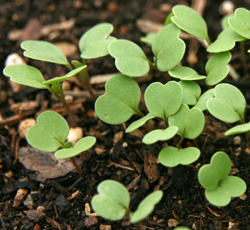
This is an annual, growing quickly from seed, just like radishes. Like other leafy crops, it does tolerate frost so can be planted several weeks before the last frost. It is easily grown from seed, but transplants can also be used. It is often a component of mesclun or “field greens” mixes. Seeds germinate within a few days even in cool soil. Seedlings have two rounded cotyledons each with an indentation on the end while the first young leaves are entire and elongated. Older leaves have lobes of varying degrees, so these leaves look like dark green oak leaf lettuce – often deeply pinnate with 4-10 lobes.
Plants grow a rosette of dull green leaves 3-8 inches long and under the appropriate conditions (long days, high temperatures, and/or dry soil) quickly produce a single, branched flower stem 2-3 feet tall. The creamy white flowers have four petals, each with purple to deep brown-red veins, and bright yellow stamens. The sepals are shed soon after the flower opens. The ½-3/4 (2-4cm) inch wide flowers are edible and be used as a garnish on salads or soups, with a milder flavor than the leaves. Whole stems can also be cut as a filler in bouquets.
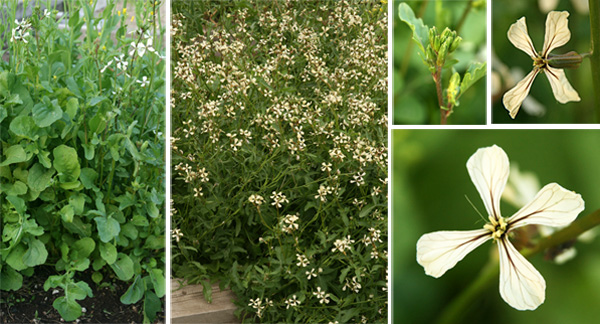
When pollinated by insects, the flowers are followed by erect, elongate pods (siliqua) up to 40 mm long and containing 6-8 brown seeds. When young and tender, these pods are edible. Arugula is somewhat weedy, reseeding readily if the plants are allowed to mature in the garden. To collect the seeds it is best to cut the stems when the plants begin to dry. Hang the cut stems upside down in a paper bag until the pods shatter and the seeds are released.
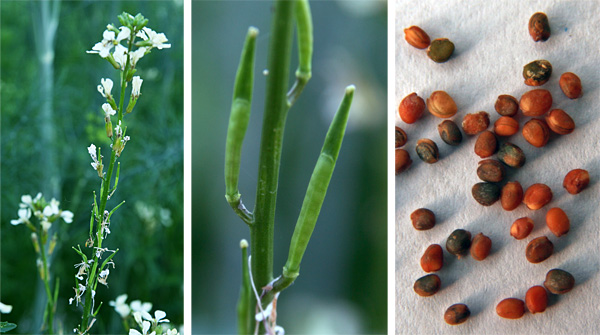
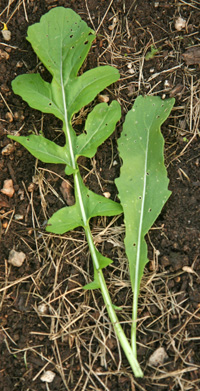
Plant arugula in full sun in rich, well-drained soil. Light shade may help slow bolting during the hottest part of the growing season. Sow shallowly as early as the soil can be worked. Make successive plantings at 2-3 weeks from early spring to fall for a constant supply of young arugula – or allow some plants to flower and self-seed for a fall crop. Thin seedlings to 3-6 inches apart for individual plants, or leave denser plantings for cut-and-come-again treatment. Because it is such a fast-growing crop, it can be used as an interplanting between other crops in small gardens short on space. Arugula can also be grown in containers, even in the winter on a bright windowsill.
Arugula requires little care and has few pests, although flea beetles can damage leaves or completely devour small plants when numerous.

Leaves with the shot-holes typical of flea beetle feeding may not be as appetizing as undamaged leaves, but can still be consumed. Row covers can be used to keep flea beetles off the plants but since these insects overwinter in the soil they could emerge under the covers rather than be excluded by it if put on too early.
There is a fair amount of variability in resistance to bolting, leaf patterns, stem color, branching habit, and seed production, and some selections have been made. However, there are few cultivars generally available.
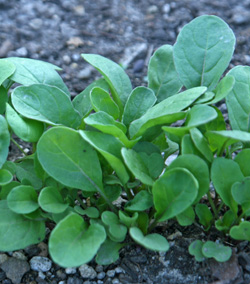
Leaves can be harvested as soon as they are a couple of inches long. The tender young leaves have a distinctive spicy, pungent flavor variously described as nutty-peppery, mustard-like or having a horseradish-like taste. Older leaves develop a stronger, almost bitter flavor. Remove just the other leaves of the rosette, or cut the entire plant an inch or two from the ground in as little as 3-4 weeks and then sequentially harvested from the regrowth. Regularly harvesting the small leaves will help keep the plant from going to seed and from developing strong-tasting older leaves (which can be undesirably strong to some people). Drought and summer heat also intensify the flavor of the leaves.
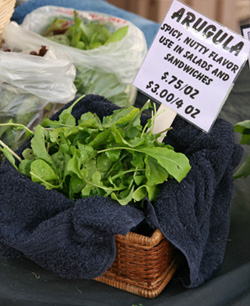
–Susan Mahr, University of Wisconsin – Madison
Ask Your Gardening Question
If you’re unable to find the information you need, please submit your gardening question here:





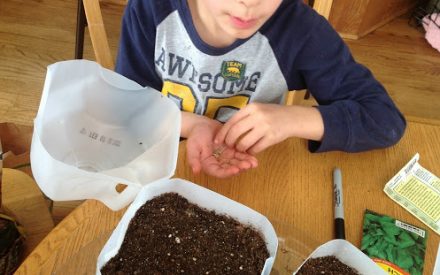 Seed Starting
Seed Starting Growing Vegetables at Home: Questions and Answers
Growing Vegetables at Home: Questions and Answers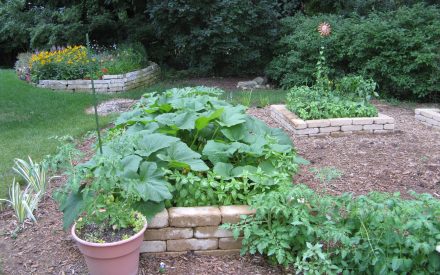 Growing Vegetables in Containers
Growing Vegetables in Containers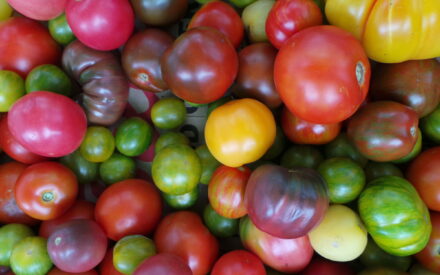 Homegrown Tomatoes for Wisconsin
Homegrown Tomatoes for Wisconsin


